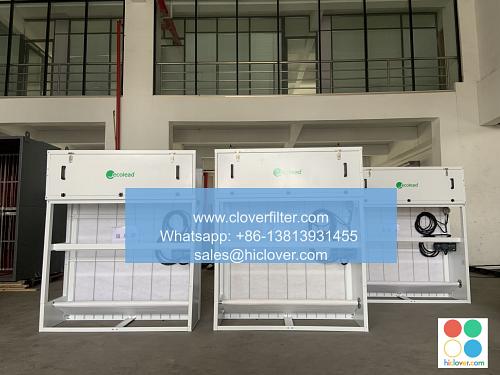Air Quality Data Analysis with Air Filter APIs: Unlocking Insights and Trends

The increasing concern about air pollution and its impact on human health has led to a growing demand for air quality data analysis. With the help of Air Filter APIs, it is now possible to unlock valuable insights and trends in air quality data, enabling informed decision-making and improved public health outcomes. In this article, we will explore the applications of Air Filter APIs in air quality monitoring, data analytics, and machine learning, and highlight various application areas where these APIs can be utilized.
Introduction to Air Filter APIs
Air Filter APIs are specialized Application Programming Interfaces (APIs) designed to provide access to air quality data from various sources, including air quality monitoring stations, sensors, and other data providers. These APIs enable developers to integrate air quality data into their applications, websites, and IoT devices, facilitating the creation of innovative solutions for air quality monitoring and management.
Applications of Air Filter APIs in Air Quality Data Analysis
Air Filter APIs can be used in a variety of applications, including:
* Air quality forecasting: By analyzing historical air quality data, Air Filter APIs can help predict future air quality trends, enabling individuals and organizations to take proactive measures to minimize exposure to poor air quality.
* Indoor air quality monitoring: Air Filter APIs can be integrated with indoor air quality sensors to provide real-time monitoring and alerts, helping to maintain a healthy indoor environment.
* Outdoor air quality monitoring: Air Filter APIs can be used to monitor outdoor air quality, providing valuable insights into pollution levels and trends in urban and rural areas.
* Research and development: Air Filter APIs can be used by researchers to analyze large datasets and identify trends and patterns in air quality data, contributing to the development of new air quality management strategies.
Unlocking Insights with Data Analytics and Machine Learning
By combining Air Filter APIs with data analytics and machine learning techniques, developers can unlock deeper insights into air quality data, including:
* Pattern recognition: Machine learning algorithms can be used to identify patterns in air quality data, helping to predict future trends and anomalies.
* Anomaly detection: Data analytics can be used to detect unusual patterns in air quality data, enabling swift action to be taken in response to pollution events.
* Correlation analysis: Air Filter APIs can be used to analyze correlations between air quality data and other factors, such as weather patterns, traffic volume, and industrial activity.
Application Areas for Air Filter APIs
Air Filter APIs have a wide range of applications across various industries, including:
* Environmental monitoring: Air Filter APIs can be used to monitor air quality in national parks, wildlife reserves, and other environmentally sensitive areas.
* Smart cities: Air Filter APIs can be integrated into smart city infrastructure to provide real-time air quality monitoring and management.
* Industrial hygiene: Air Filter APIs can be used to monitor indoor air quality in industrial settings, helping to protect worker health and safety.
* Public health: Air Filter APIs can be used to analyze air quality data and provide insights into the impact of air pollution on public health, enabling informed decision-making and policy development.
Conclusion
In conclusion, Air Filter APIs offer a powerful tool for air quality data analysis, enabling the unlocking of valuable insights and trends in air quality data. By combining these APIs with data analytics and machine learning techniques, developers can create innovative solutions for air quality monitoring and management, with applications across a wide range of industries. As the demand for air quality data analysis continues to grow, the use of Air Filter APIs is likely to become increasingly important, enabling us to create a healthier, more sustainable future for all. You haven’t asked a question or provided any context. What would you like to talk about or ask? I’ll do my best to provide a helpful and direct response.

